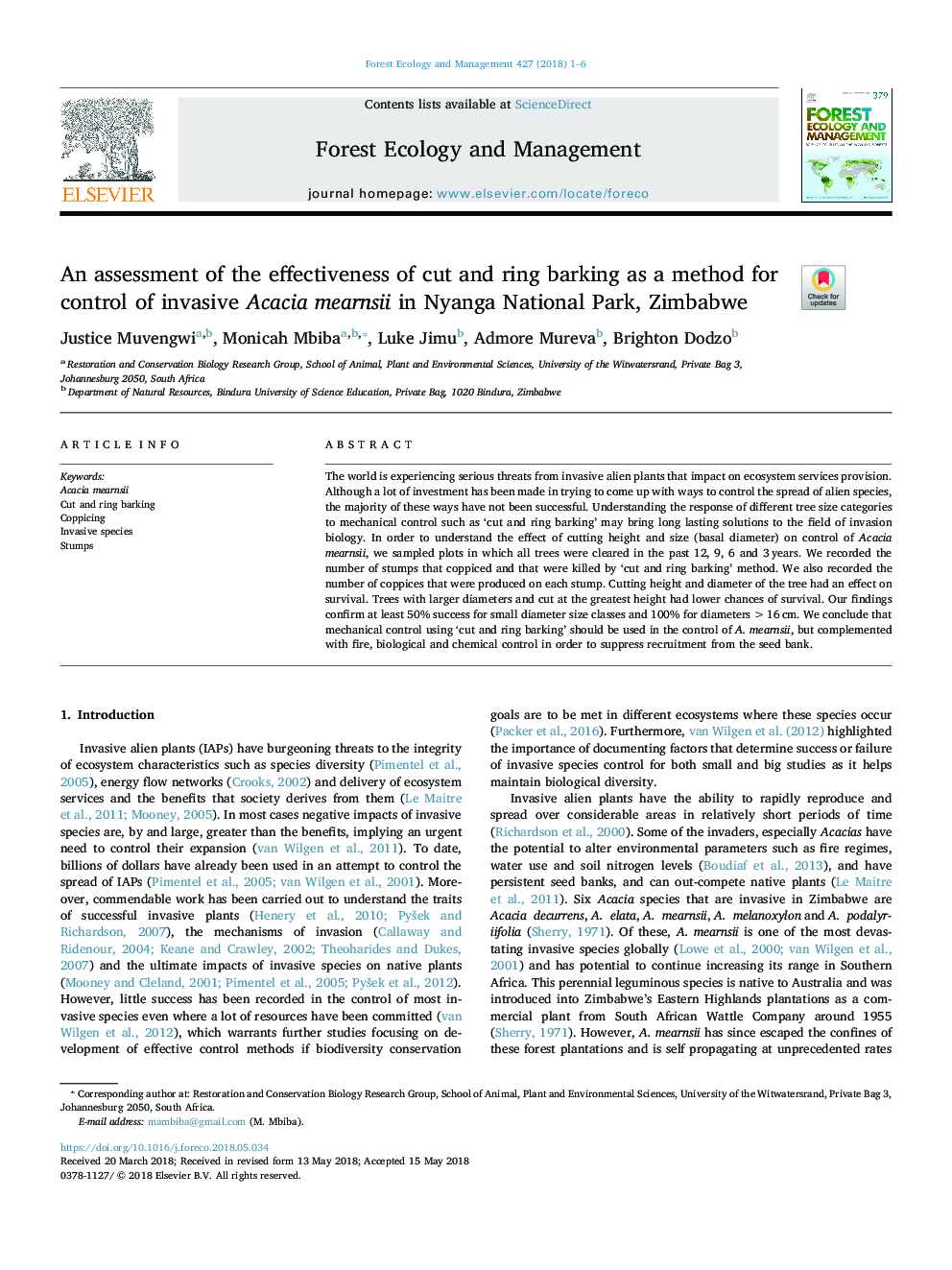| Article ID | Journal | Published Year | Pages | File Type |
|---|---|---|---|---|
| 6541487 | Forest Ecology and Management | 2018 | 6 Pages |
Abstract
The world is experiencing serious threats from invasive alien plants that impact on ecosystem services provision. Although a lot of investment has been made in trying to come up with ways to control the spread of alien species, the majority of these ways have not been successful. Understanding the response of different tree size categories to mechanical control such as 'cut and ring barking' may bring long lasting solutions to the field of invasion biology. In order to understand the effect of cutting height and size (basal diameter) on control of Acacia mearnsii, we sampled plots in which all trees were cleared in the past 12, 9, 6 and 3â¯years. We recorded the number of stumps that coppiced and that were killed by 'cut and ring barking' method. We also recorded the number of coppices that were produced on each stump. Cutting height and diameter of the tree had an effect on survival. Trees with larger diameters and cut at the greatest height had lower chances of survival. Our findings confirm at least 50% success for small diameter size classes and 100% for diameters >16â¯cm. We conclude that mechanical control using 'cut and ring barking' should be used in the control of A. mearnsii, but complemented with fire, biological and chemical control in order to suppress recruitment from the seed bank.
Related Topics
Life Sciences
Agricultural and Biological Sciences
Ecology, Evolution, Behavior and Systematics
Authors
Justice Muvengwi, Monicah Mbiba, Luke Jimu, Admore Mureva, Brighton Dodzo,
